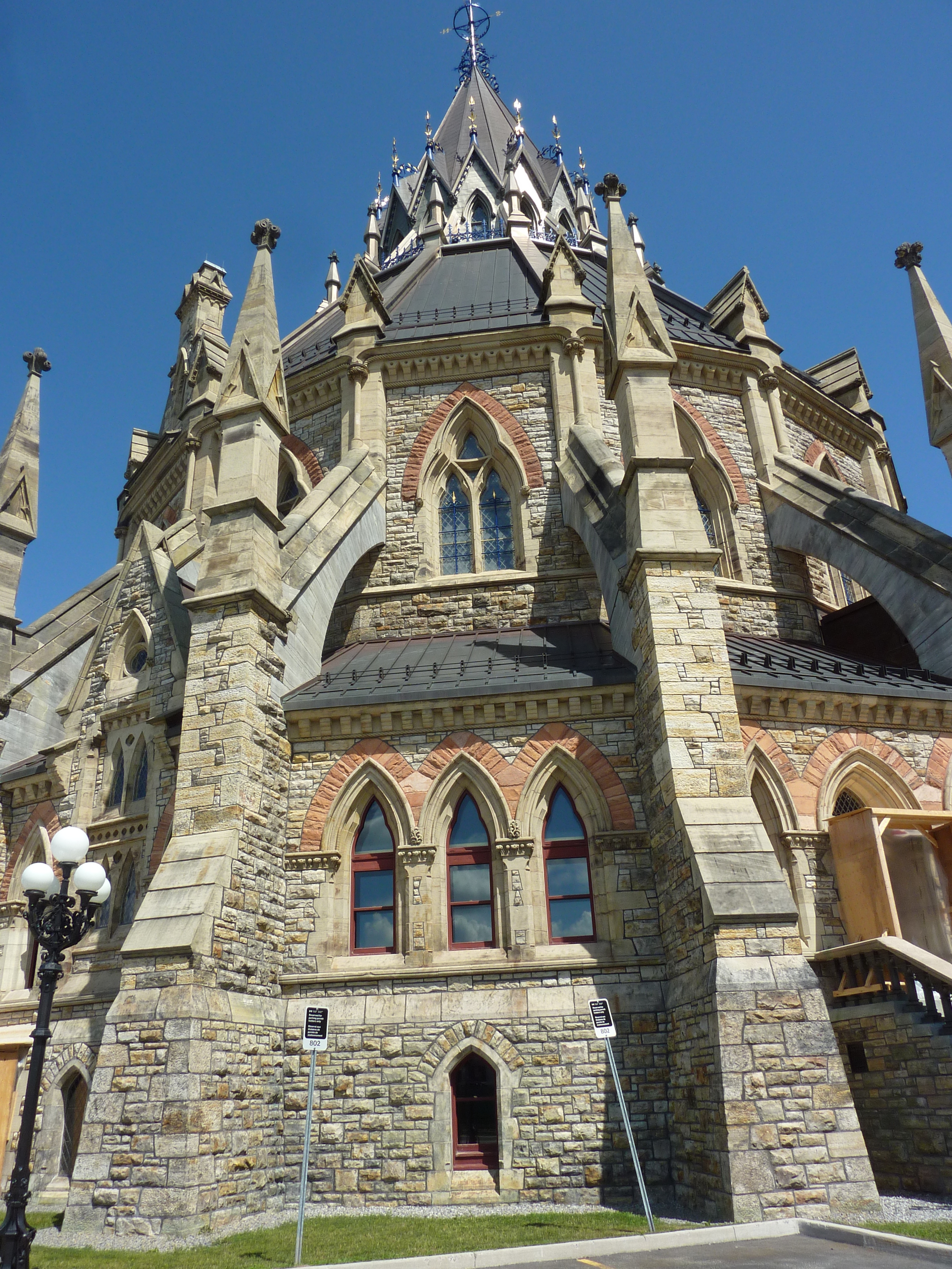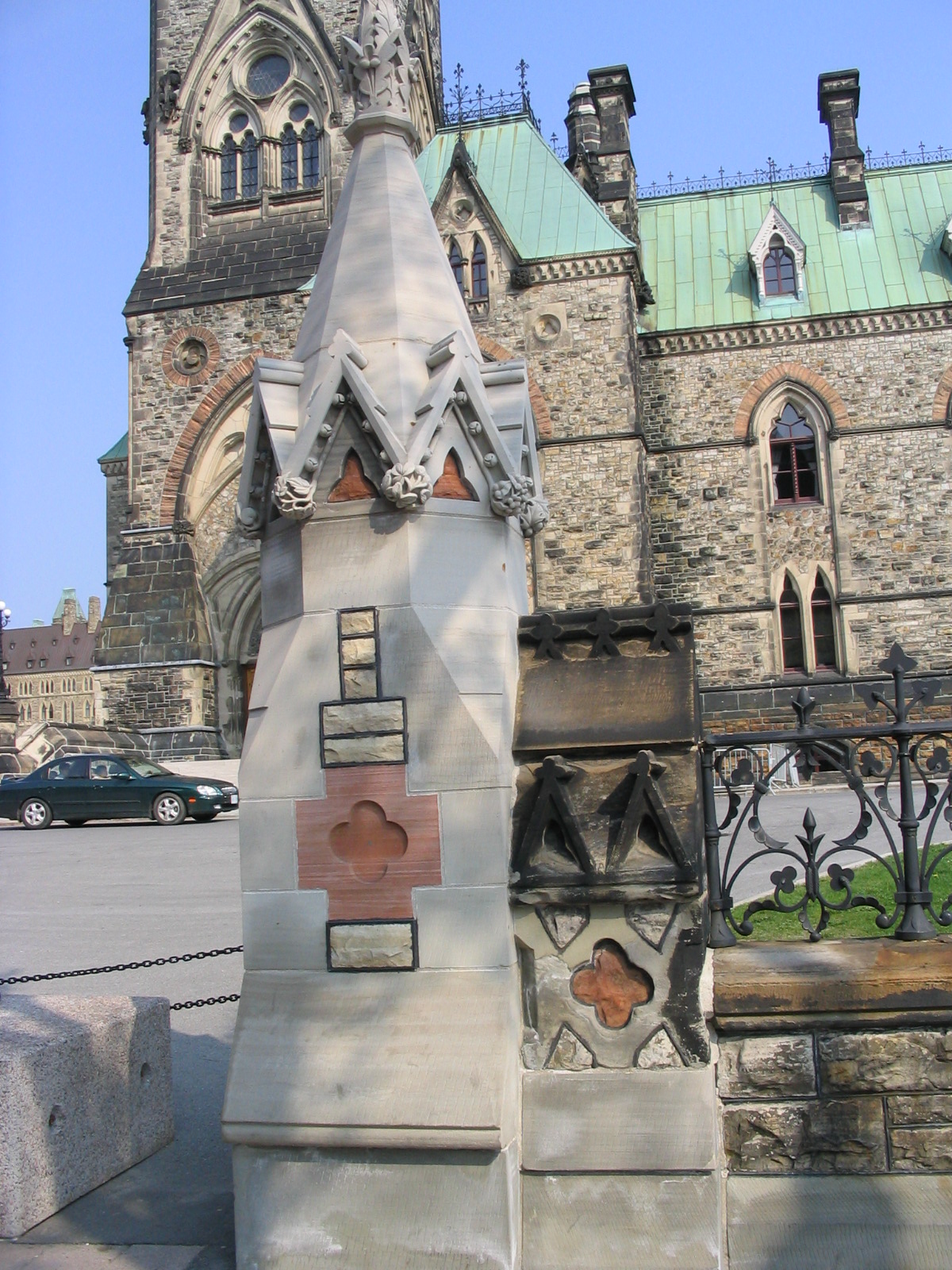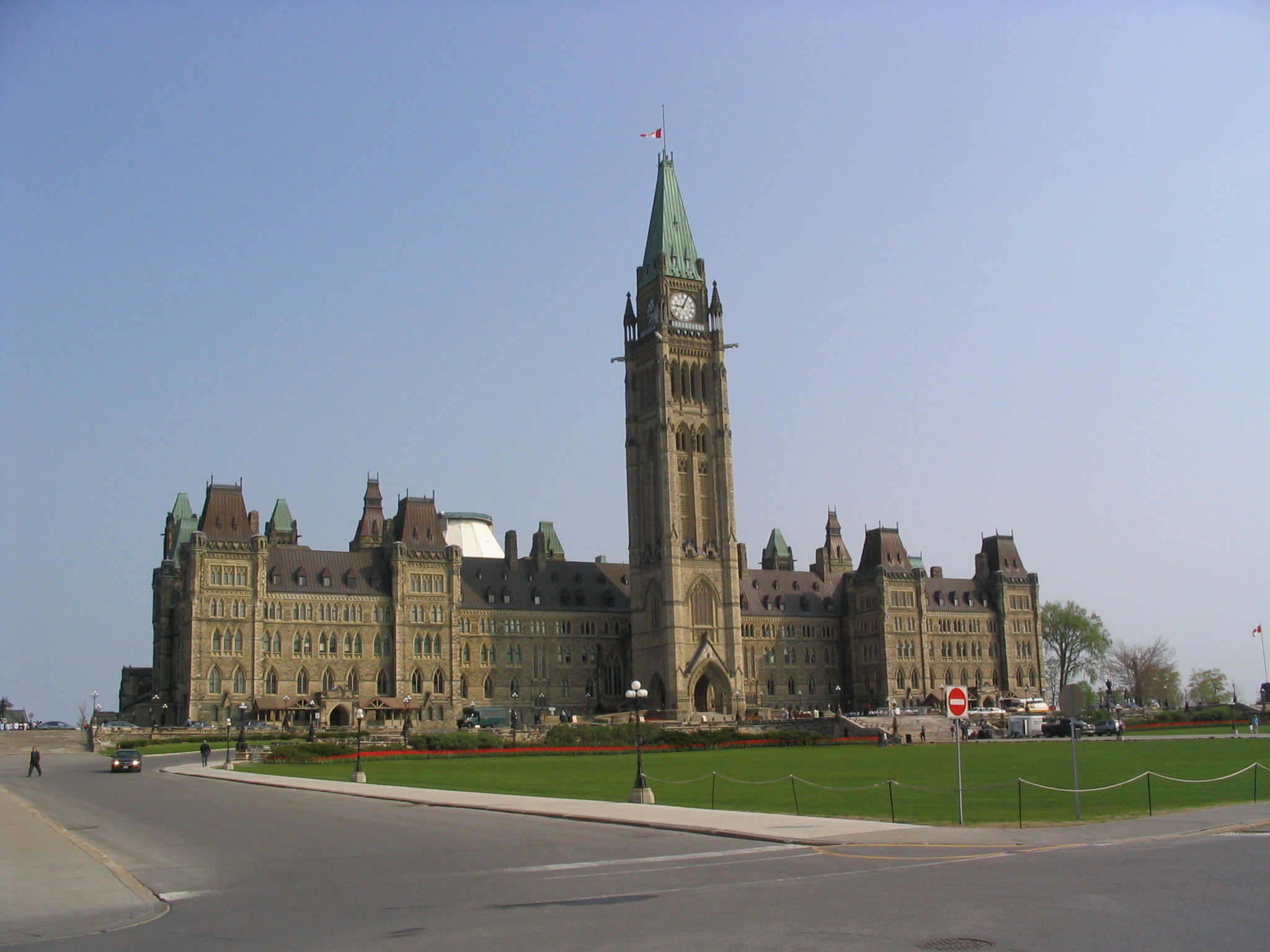23. Outcrop along HWY 307, near Cantley
Gneiss exhibiting folding, faulting, partial melting and intrusion by dykes.
Gneiss outcrop along HWY 307
363 Montée de la Source (Hwy 307), Cantley, PQ.
Cross-cutting dikes in gneissic outcrop, Hwy 307/Montée de la Source, Cantley, Que.
Photo by B. Halfkenny.
The large outcrop is in front of a building called Place Gascon. You should acquire permission from the owners on the second floor (they have been very positive about people looking at this outcrop).
This site is a freshly exposed large outcrop of Grenville aged (1.2 to 1.1 billion years old) gneiss. This new exposure has yet to be fully investigated, but our initial observations indicate it is composed of metamorphosed sedimentary rocks; prior to metamorphism these were interbedded sandstones, siltstone and mudstones. These rocks have been exposed to high pressures and temperatures, indicated by the reordering of minerals to produce the observed gneissosity; white, almost pure quartz bands and darker mafic bands. The dark mafic rock was subjected to high enough temperature that it appears to have partially melted, producing irregular ribbons of feldspar, quartz and large amphiboles. Folding, small scale faulting and partial melting of the original sedimentary rocks is suggested by the observed structures. Granitic dikes cut across the gneissic banding and contain very large quartz and potassium feldspar crystals. These dikes seem to be nearly vertical and appear to follow structural weaknesses created by the previous folding and faulting. These deep crustal rocks (10's of km depth) were raised to the Earth's surface by weathering and erosion of the overlying rocks. Subsequently, the area was glaciated, producing the polished surfaces preserved on the quartzite bands, and then weathered, preferentially removing material from the thinner mafic bands. It was then most recently exposed by mechanical removal of overburden soils during construction of the building and cleaned with a powerwasher such that we now are able to see this surface.


